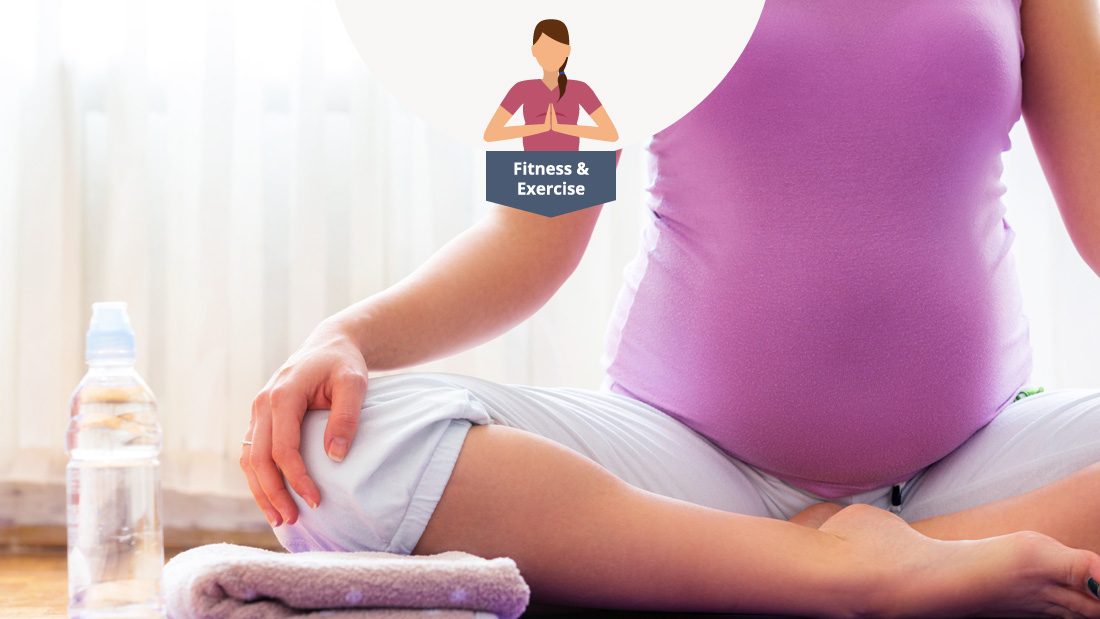
Yoga poses to prepare your body for labour
Yoga is one of the best types of pregnancy exercise. The low level of risk combined with its many benefits – increased flexibility and strength, improved balance, and more relaxed breathing, to name a few – mean that it’s one of the most commonly recommended exercises for pregnant women.
In the earlier stages of pregnancy, yoga may be advised as an activity to help with relaxation, but in the later stages a lot of what you learn in a special prenatal class can be used to help you during labour. And because yoga is not a strenuous activity, it’s great if you’re feeling a bit fatigued – you don’t need boundless energy to complete a session, but it will help your strength, flexibility and balance.
Why is yoga so useful for labour?
Yoga helps promote controlled breathing. Don’t underestimate the power of breathing as a pain relief method during labour. When done properly, it can significantly reduce discomfort. So make sure to put an emphasis on your breathing during all yoga sessions. Focus on taking a deep breath in through the nose, filling your lungs and allowing your belly to expand, and then exhale fully out through the mouth. This will train you to stay conscious of your breathing, which will be very useful when the contractions start. By perfecting your breathing technique, you will be equipping yourself with the most natural coping mechanism for labour.
Some yoga poses will also strengthen and improve the flexibility of your pelvic muscles as well as other core muscles vital for vaginal delivery. They are also likely to give your stamina a boost because of the physical and mental discipline needed to hold the poses.
Exercises which gently rock the pelvis and positions putting you on your hands and knees can also help encourage your baby to get into the best position for birth, which is when their head is down with the back of the head towards the front of your belly (this is known as the anterior position). NCT lists rocking and wriggling your hips as one of the best techniques for encouraging a straightforward birth. This is yet another reason why it’s also very important to perform regular pelvic tilts.
Positions to practise during the third trimester
A few simple yoga positions can help ease the pain and stress you may face during childbirth. It’s good to learn these now so that you can easily put them into use when the time comes. Don’t forget to ask your instructor for guidance with any unfamiliar poses before attempting them.
The Half Butterfly pose. This exercise can help loosen your hip and knee joints, potentially shortening the delivery process. Sit with your legs outstretched and then bend your right foot up to your left thigh. Hold the toes of your right foot with your left hand and place your right hand on the bent right knee. Use your right hand to pull your knee up towards the chest, inhaling as you do so. Then exhale as you push it down towards the floor. Now do the exercise with the opposite leg.
Goddess pose – A brilliant pose for strengthening your legs and thighs, getting them ready to take on labour. Stand with your feet a stride apart (a bit wider than shoulder-width) with arms by your side. Contract your pelvic floor muscles and then lift your arms above your head as you inhale. As you exhale, bend your arms and knees, lowering your hips as far as is comfortable and stretching out your fingers. Hold this position while continuing to take deep, controlled breaths. On an inhalation, straighten your legs and arms so that you return to the original position. Repeat this movement, bending your arms and legs on an exhalation and straightening them on inhalation.
Hip rotation – This can help relax your hips and lower back muscles, easing pain during labour. Stand with a straight posture, legs apart and your hands placed below your hips. Take a deep breath in and then, as you breathe out, bend your knees slightly and rotate your hips in a clockwise motion. Be careful not to twist your knees and keep your upper body straight. After ten repetitions of clockwise rotations, rotate anti-clockwise. Hip rotations can also be done sitting while on a fitness ball. When in labour, you can do these standing with the support of a loved one.
Child’s pose – This is a great pose to adopt as you focus on your breathing, and it’s also good for rest periods between contractions, helping you relax while gently stretching your hips and thighs. Start on your hands and knees with your knees and thighs separated. Sit up straight and then bend forward (while exhaling), allowing your torso and abdomen to rest between your thighs, taking your forehead as close to the floor as you can comfortably manage. Extend your arms out in front of you. You can stay in this position while you focus on your breathing. Use your hands to gently bring yourself up from the position.
Listen to your body
At this advanced stage of pregnancy, it should go without saying that you should be cautious about which moves you attempt. Always listen to your body and don’t attempt to overstretch your body beyond its comfortable range of movement.
Hopefully, because these yoga stretches are very calming, practising them will also help you stay in tune with your body and, therefore, allow you to bond with your developing baby as you focus. And there’s no better way to prepare for the birthing process than that.


